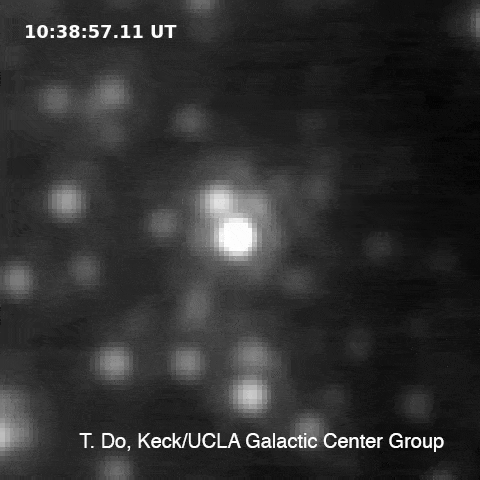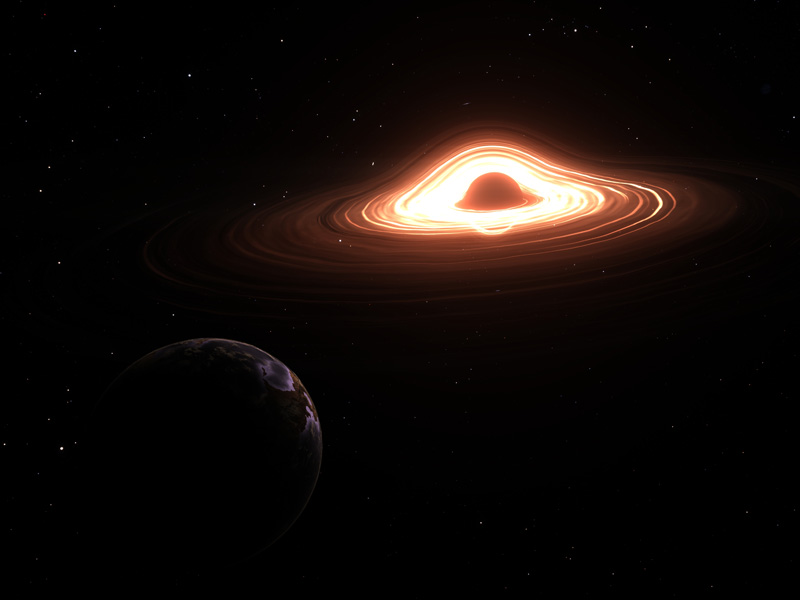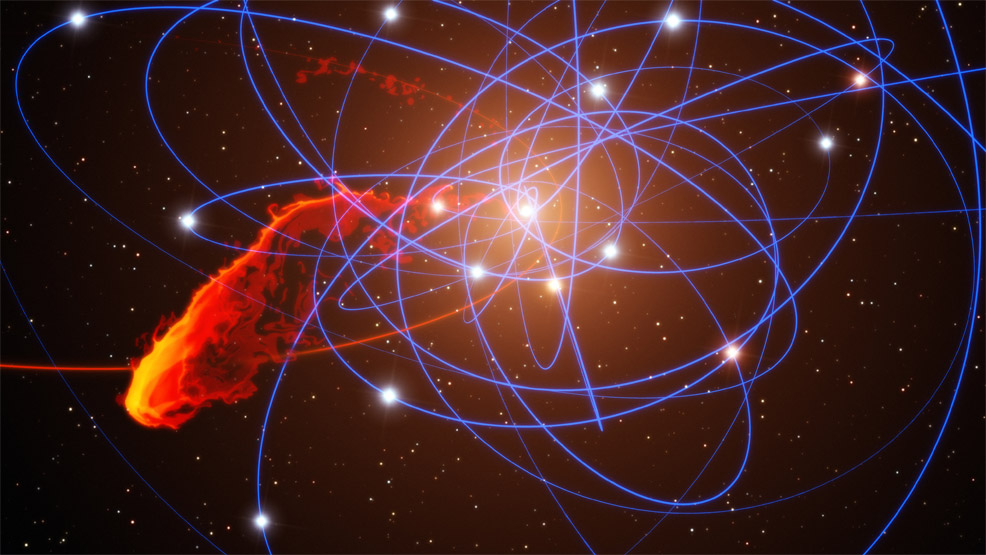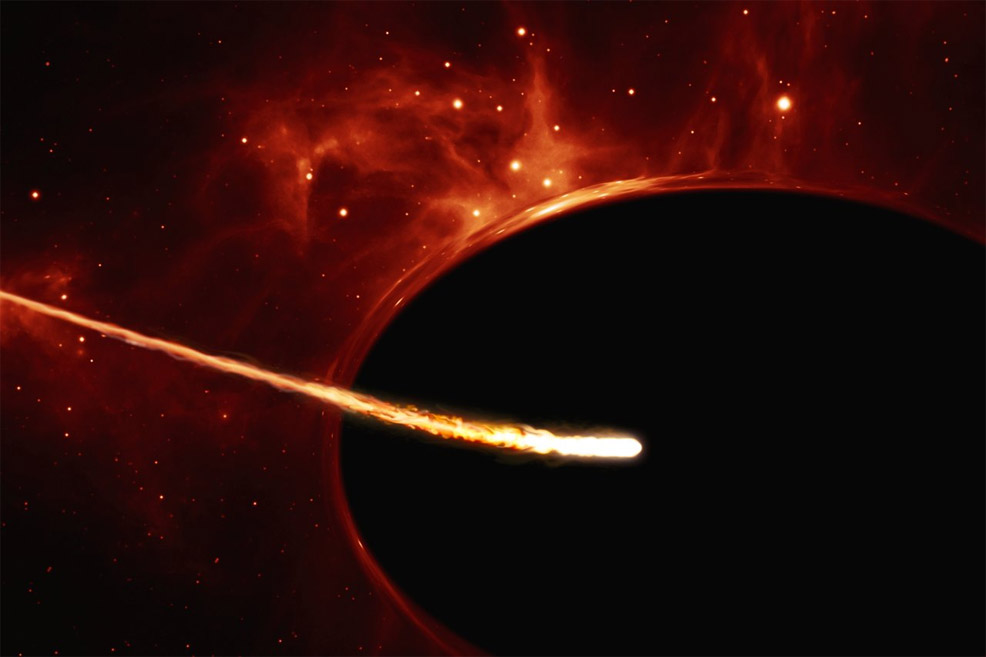
13th August 2019 Mysterious brightening at the galactic core Astronomers using the Keck Observatory in Hawaii report a sudden brightening of Sagittarius A*, which became 75 times brighter than usual, suggesting that the supermassive black hole may have encountered another object.
At the very centre of our galaxy is a monstrous, swirling vortex of energy and matter known as Sagittarius A* (Sgr A*). This gravitational anomaly is a supermassive black hole, around which the entire Milky Way revolves and maintains its spiral form. Estimates of Milky Way star numbers vary, but a commonly agreed figure is 400 billion systems, all circling an impossibly dense point in space. Our own Sun is a part of this cosmic carousel, which unfolds on timescales barely conceivable to the human mind, as it completes one "galactic orbit" every 225 million years. Whereas most black holes weigh in at five to 50 solar masses – and so-called intermediate-mass black holes can reach 100,000 – Sgr A* is a gargantuan beast with 4.1 million times the mass of our Sun. Despite its enormous power and influence, Sagittarius A* keeps a relatively low profile. Unlike some of the more distant galaxies, where active nuclei have been observed with vast accretion disks and jets of ionised matter, it is normally quiet and has minimal fluctuations in brightness.
Just recently, however, astronomers witnessed an astonishing event. During four nights of observations, using the WM Keck Observatory in Hawaii, a brief but extreme increase in brightness occurred. In the timelapse GIF animation, spread over 2.5 hours, Sgr A* appears at 75 times its usual brightness and was seen at its highest ever illumination in the infrared. "I was pretty surprised at first and then very excited," said Tuan Do of the University of California Los Angeles, in an interview with ScienceAlert. "The black hole was so bright, I at first mistook it for the star S0-2, because I had never seen Sgr A* that bright. Over the next few frames, though, it was clear the source was variable and had to be the black hole. I knew almost right away there was probably something interesting going on with the black hole." Exactly what happened is currently unknown. Tuan Do and his colleagues are now planning additional observations over the coming weeks, across a wider range of wavelengths. Other telescopes – including Spitzer, Chandra, Swift and ALMA – happened to be observing the galactic core in recent months and their data could reveal more clues.
What is certain, however, is that the black hole itself, being a region of utter blackness, did not emit the light. Rather, it was the surrounding gas and dust that suddenly lit up. One possibility is that S0-2, a large B-type star, passed close enough to alter the stream of gas at the event horizon. A somewhat similar theory is that G2, an object thought to be a nearby gas cloud (illustrated above), may have been partially absorbed. Another possibility is that a large asteroid or planet was torn apart by the immense gravitational forces, with its debris showing up in infrared. The observations took place on 13th May 2019. However, given the distance required for light to travel, this event actually occurred some 26,000 years ago – during the peak of the Last Glacial Maximum in the Upper Palaeolithic, when vast ice sheets covered much of the Earth. A paper describing the team's initial findings has been accepted into The Astrophysical Journal Letters, and is available on arXiv.
Comments »
If you enjoyed this article, please consider sharing it:
|










